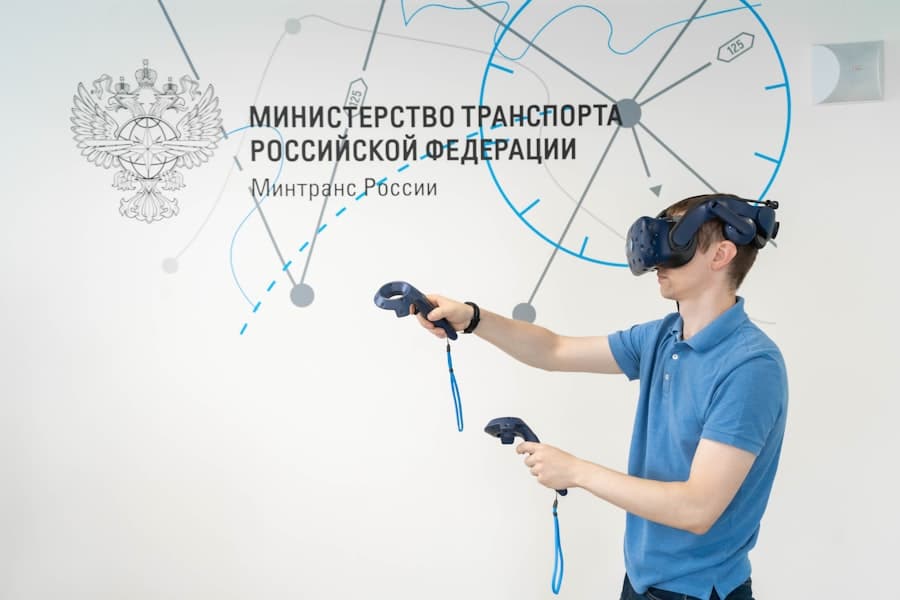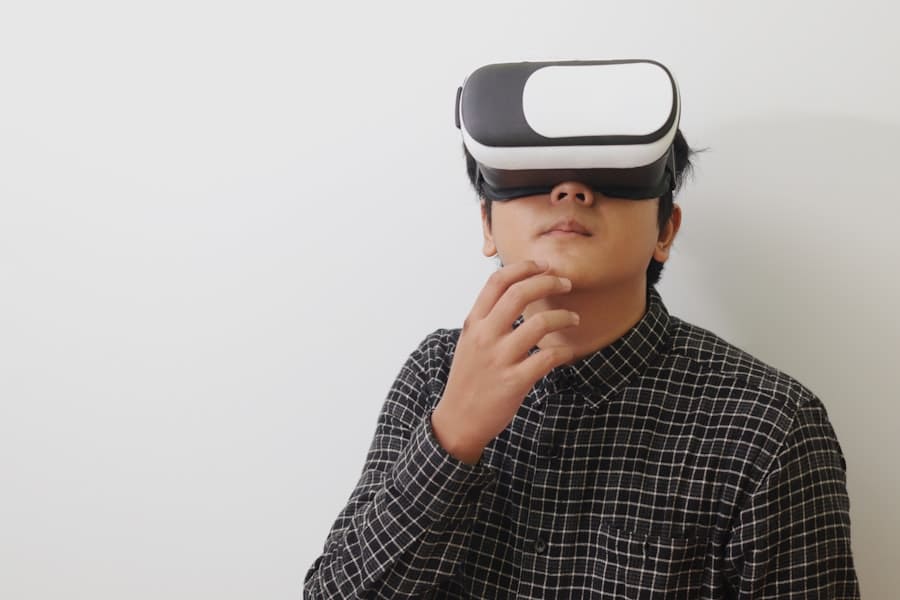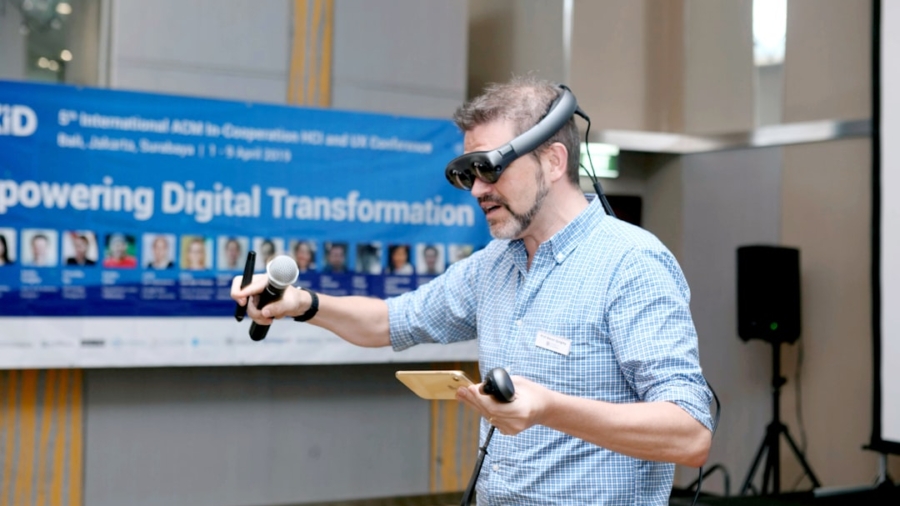Virtual reality (VR) has emerged as a transformative technology in various fields, and technician training is no exception. By immersing learners in a simulated environment, VR offers a unique platform for skill acquisition that traditional training methods often struggle to provide. The integration of VR into technician education allows for a more interactive and engaging learning experience, enabling trainees to practice their skills in a safe and controlled setting.
This innovative approach not only enhances the learning process but also prepares technicians for real-world challenges they may face in their respective fields. The evolution of VR technology has made it increasingly accessible and effective for educational purposes. With advancements in hardware and software, VR systems can now deliver high-quality simulations that closely mimic real-life scenarios.
This capability is particularly beneficial for technicians who require hands-on experience to master complex tasks. As industries continue to evolve, the demand for skilled technicians who can adapt to new technologies and methodologies is growing. Consequently, the adoption of VR in technician training is becoming a vital component of workforce development strategies across various sectors.
Key Takeaways
- Virtual reality (VR) is revolutionizing technician training by providing immersive and interactive learning experiences.
- VR training for technicians offers advantages such as increased safety, cost savings, and the ability to practice in realistic scenarios.
- VR simulations allow technicians to gain hands-on experience in a safe and controlled environment, preparing them for real-world situations.
- VR improves retention and engagement in technician training by providing a more memorable and interactive learning experience.
- Despite initial setup costs, VR training for technicians is cost-effective in the long run due to reduced travel and equipment expenses.
The Advantages of Virtual Reality Training for Technicians
One of the most significant advantages of virtual reality training is its ability to provide a risk-free environment for learning. Technicians often work with hazardous materials or complex machinery, where mistakes can lead to serious consequences. VR training allows them to practice their skills without the fear of injury or damage to equipment.
For instance, an HVAC technician can learn how to troubleshoot and repair a malfunctioning system in a virtual environment, gaining confidence and competence before working on actual units. This safety aspect not only protects trainees but also reduces liability for training organizations. Moreover, VR training can be tailored to meet the specific needs of different industries and skill levels.
Customizable simulations enable educators to create scenarios that reflect the unique challenges technicians may encounter in their jobs. For example, a virtual simulation for an automotive technician could include various vehicle models and repair situations, allowing trainees to experience a wide range of problems and solutions. This adaptability ensures that technicians receive relevant training that aligns with industry standards and expectations, ultimately enhancing their employability.
Virtual Reality Simulations for Hands-On Experience

Hands-on experience is crucial in technician training, as it allows learners to apply theoretical knowledge in practical situations. Virtual reality simulations bridge the gap between theory and practice by providing immersive experiences that replicate real-world tasks. For instance, in the field of electrical engineering, trainees can engage in simulations that involve wiring circuits or troubleshooting electrical systems.
These simulations not only enhance technical skills but also foster critical thinking and problem-solving abilities. The interactivity of VR simulations further enriches the learning experience. Trainees can manipulate virtual tools and equipment, experiment with different techniques, and receive immediate feedback on their performance.
This level of engagement is often lacking in traditional classroom settings, where passive learning predominates. By actively participating in their education, technicians are more likely to retain information and develop a deeper understanding of their craft. Additionally, the ability to repeat simulations as needed allows learners to refine their skills until they achieve proficiency.
How Virtual Reality Improves Retention and Engagement in Technician Training
Retention of knowledge is a critical factor in effective technician training, as the ability to recall information and apply it in practical situations directly impacts job performance. Research has shown that immersive learning experiences, such as those provided by virtual reality, significantly enhance retention rates compared to conventional methods. The engaging nature of VR captures learners’ attention and encourages active participation, which are essential components of effective learning.
Furthermore, VR training can cater to various learning styles, accommodating visual, auditory, and kinesthetic learners alike. For example, visual learners benefit from the vivid graphics and animations that illustrate complex concepts, while auditory learners can engage with narrated instructions or discussions within the simulation. Kinesthetic learners thrive on the hands-on aspect of VR, as they physically interact with the virtual environment.
This multifaceted approach ensures that all trainees can connect with the material in a way that resonates with them personally, leading to improved retention and overall success in their training.
The Cost-Effectiveness of Virtual Reality Training for Technicians
While the initial investment in virtual reality technology may seem substantial, the long-term cost-effectiveness of VR training becomes apparent when considering various factors such as reduced training time, lower material costs, and decreased accident rates. Traditional training often requires physical materials, tools, and equipment that can be expensive to procure and maintain. In contrast, VR simulations eliminate the need for these resources by providing a virtual platform where trainees can practice without incurring additional costs.
Moreover, VR training can significantly reduce the time required for technicians to become proficient in their roles. By allowing trainees to engage in repetitive practice without the constraints of physical limitations or safety concerns, they can accelerate their learning curve. This efficiency translates into faster onboarding processes for new employees and ultimately leads to increased productivity within organizations.
As companies strive to remain competitive in rapidly evolving industries, the ability to train technicians quickly and effectively becomes a crucial advantage.
Real-Life Applications of Virtual Reality in Technician Training

Numerous industries have begun to embrace virtual reality as a viable solution for technician training, showcasing its versatility and effectiveness across various fields.
These immersive experiences allow them to refine their skills and build confidence before performing on actual patients.
The manufacturing sector also benefits from VR training programs designed for technicians working with complex machinery or assembly lines. By simulating real-world production environments, trainees can learn how to operate equipment safely and efficiently while understanding the intricacies of their roles within the larger manufacturing process. Companies like Ford have implemented VR training for assembly line workers, resulting in improved efficiency and reduced error rates during production.
The Future of Virtual Reality in Technician Education
As technology continues to advance at an unprecedented pace, the future of virtual reality in technician education appears promising. Innovations such as augmented reality (AR) and mixed reality (MR) are likely to complement existing VR applications, creating even more immersive learning experiences. For example, AR could overlay digital information onto physical environments, allowing technicians to receive real-time guidance while working on actual equipment.
Additionally, the integration of artificial intelligence (AI) into VR training systems could further enhance personalization and adaptability. AI algorithms could analyze individual trainee performance data and adjust simulations accordingly, providing tailored feedback and recommendations for improvement.
Challenges and Limitations of Virtual Reality in Technician Training
Despite its many advantages, the implementation of virtual reality in technician training is not without challenges. One significant barrier is the initial cost associated with acquiring VR hardware and software. While prices have decreased over time, many organizations may still find it difficult to justify the investment without clear evidence of return on investment (ROI).
Additionally, smaller training institutions may lack the resources or expertise needed to develop high-quality VR content tailored to their specific needs. Another limitation lies in the potential for technological issues during training sessions. Technical glitches or hardware malfunctions can disrupt the learning process and lead to frustration among trainees.
Furthermore, some individuals may experience motion sickness or discomfort while using VR headsets, which could hinder their ability to engage fully with the training material. Addressing these challenges will require ongoing research and development efforts within the field of educational technology. In conclusion, while virtual reality presents numerous opportunities for enhancing technician training through immersive experiences and improved retention rates, it is essential for organizations to carefully consider both its benefits and limitations as they integrate this technology into their educational programs.
In the rapidly evolving landscape of technology, virtual reality (VR) is playing a pivotal role in shaping the future of technical training. An article titled “How Virtual Reality Is Training the Next Generation of Technicians” delves into the innovative ways VR is being utilized to equip technicians with the skills they need for the future. For those interested in exploring more about the tech industry’s dynamic nature and opportunities, the article Discover the Best Paying Jobs in Tech 2023 provides valuable insights into lucrative career paths within the tech sector. This related piece complements the discussion on VR training by highlighting the broader context of technological advancements and their impact on job markets.
FAQs
What is virtual reality (VR) training?
Virtual reality (VR) training is a technology that uses computer-generated simulations to create a realistic environment for trainees to practice and improve their skills in a safe and controlled setting.
How is virtual reality being used to train technicians?
Virtual reality is being used to train technicians by providing them with immersive and interactive simulations of real-world scenarios. This allows them to practice their skills and learn new techniques in a realistic and risk-free environment.
What are the benefits of using virtual reality for technician training?
Some benefits of using virtual reality for technician training include increased engagement and retention, the ability to practice in a safe environment, cost-effectiveness, and the opportunity to train in a variety of scenarios that may be difficult to replicate in real life.
What types of technicians can benefit from virtual reality training?
Various types of technicians, such as automotive technicians, HVAC technicians, electricians, and medical technicians, can benefit from virtual reality training. Any profession that requires hands-on skills and problem-solving abilities can benefit from this type of training.
Are there any limitations to virtual reality training for technicians?
Some limitations of virtual reality training for technicians include the initial cost of implementing the technology, the need for specialized equipment, and the potential for simulation sickness in some trainees. Additionally, virtual reality may not fully replicate the physical sensations of certain tasks.

